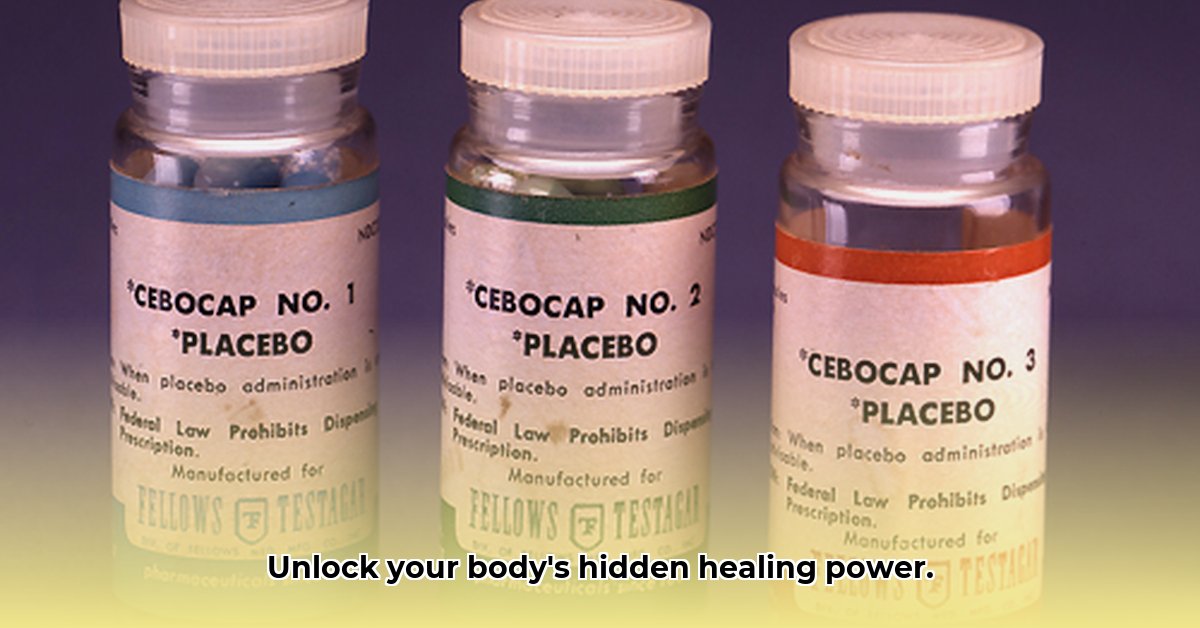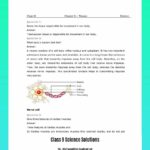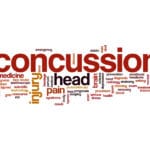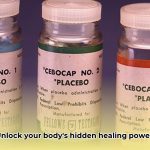Ever heard of a sugar pill making someone feel better? It sounds surprising, but that’s the power of the placebo effect – your mind genuinely influencing your body’s health! It’s not magic, but a fascinating connection between your thoughts and your physical state. We’ll explore how this works, from the underlying science to its real-world applications and ethical considerations. You’ll learn how your beliefs and expectations can affect your well-being, and even discover how you might harness the placebo effect for yourself. Prepare to unlock the amazing potential within your own mind and body. For more information, check out this great resource on [the placebo effect](https://www.lolaapp.com/the-placebo-effect-how-your-brain-can-heal-your-body).
The Placebo Effect: The Powerful Link Between Mind and Body and Chronic Pain Relief
The human mind possesses immense power, profoundly impacting our physical health and overall well-being. This concept is vividly illustrated by the placebo effect, a testament to the intricate connection between our minds and bodies. It’s not mere illusion; rather, it’s a fascinating interplay between your thoughts, beliefs, and your body’s physiological responses. Let’s delve into this incredible mind-body connection and explore its potential to influence your well-being, particularly in the context of chronic pain management.
What is the Placebo Effect, Really? Understanding the Mind-Body Connection for Natural Pain Relief
Imagine ingesting a pill – a completely inert sugar pill – and experiencing genuine relief from pain or other debilitating symptoms. That’s the essence of the placebo effect. It’s essentially the power of belief, demonstrating that what we think and feel can genuinely impact our physical bodies, influencing our perception of symptoms and triggering physiological changes. It’s not a fake improvement but a real physiological response triggered by expectation and belief. The very act of anticipating relief can set off a cascade of physical changes. Conversely, the nocebo effect is when negative expectations can surprisingly worsen symptoms. Think of it as the flip side of the same coin, where doubt and negativity amplify discomfort.
Understanding the Mechanism: How Does It Work Scientifically in Pain Reduction?
The placebo effect isn’t some mystical force; it’s a complex interplay of neurochemical and neurological processes within your brain. When you expect something positive to happen—like feeling better after taking a medication—your brain releases endorphins, those natural feel-good chemicals that act as potent pain relievers. These endorphins bind to the same receptors in the brain as opioid medications, providing analgesia without the risk of addiction or side effects. Dopamine, another vital neurotransmitter associated with pleasure, motivation, and reward, also gets involved, creating a positive feedback loop that reinforces the feeling of well-being and pain reduction.
Think of your brain as a sophisticated computer program constantly analyzing information, including your expectations and beliefs. If you believe a treatment will help, your brain might interpret that belief as a signal to initiate the healing process. Factors like the clinical setting and the doctor-patient relationship significantly reinforce this. The ritual of a doctor’s visit, the comforting presence of a caring and empathetic professional, and even the mere act of taking a pill contribute to this effect. It’s similar to classical conditioning: your brain associates the “treatment” with positive outcomes, leading to real physiological changes.
Different Ways in Which the Placebo Effect Shows Up: Types and Classification Based on Positive Outcome
We can categorize placebo responses into two main types: passive and active. Passive placebo effects are externally triggered, like when you receive a sugar pill from your trusted doctor, genuinely believing it’s real medicine. Active placebo responses are self-induced; these are the ones you actively create through techniques like meditation, visualization, or positive self-talk. It boils down to your personal beliefs, expectation levels, and the conscious mental efforts you make to influence your experience of your own body and mind.
Scientific Evidence: Research on Pain, Sleep, and Side Effects Mitigation
Scientists have conducted numerous well-controlled studies exploring the placebo effect across a range of medical conditions, and the evidence is compelling. It consistently demonstrates a significant role in managing a range of conditions, independent of the specific treatment being administered. It’s shown effectiveness in reducing pain (both acute and chronic), improving sleep quality, and even mitigating side effects from serious treatments like cancer chemotherapy. In some studies, researchers have observed remarkable symptom reduction—in some cases, up to half of the participants experienced significant relief simply from receiving a placebo.
However, there’s still much we don’t fully understand about achieving lasting pain relief. The underlying neurological pathways involved are still being actively investigated. The magnitude of the effect differs considerably between people; what works wonders for one person might have little or no effect on another. The long-term impact of the placebo effect also requires more rigorous research to determine its sustainability and potential for long-term pain management.
Ethical Considerations: Navigating the Moral Landscape of Placebo Use
Using placebos in clinical practice requires navigating ethical complexities with transparency and respect for patient autonomy. Informed consent is paramount; participants must understand they’re receiving a treatment that might not have direct medicinal properties. While deception is sometimes used in carefully designed research studies to ensure accurate data, it raises ethical questions and requires strict adherence to guidelines and ethical review board oversight. The potential benefits of research must be carefully weighed against the rights and well-being of all involved.
Weighing the Pros and Cons: A Balanced Placebo Perspective with Treatment Efficacy
| Pros | Cons |
|---|---|
| Significant symptom relief in many cases | Effectiveness is highly variable and unpredictable |
| Relatively safe and inexpensive | Ethical concerns surrounding deception in research |
| Can strengthen the doctor-patient relationship | Long-term effects are not fully understood |
| Potential for non-pharmaceutical therapies | Limited scientific understanding of mechanisms |
The Future of Placebo Research: Exploring the Unknown with Personalized Medicine Solutions
Current researchers are focused on better understanding why some people respond powerfully to placebos and others don’t, seeking to identify the psychological and neurological factors that predict placebo responsiveness. The “Bayesian brain” hypothesis proposes that our prior beliefs strongly influence how we interpret sensations and experiences, offering a potential framework for understanding this variability. Personalized medicine approaches hold promise, potentially tailoring placebo interventions to individual needs and belief systems. Harnessing the power of self-induced placebo effects, empowering individuals to actively participate in their own healing and pain management, is particularly exciting.
Empowering Yourself: Harnessing Your Inner Positive Thinking for Holistic Healing
The placebo effect underscores the profound link between your mind and body, highlighting the potential for self-healing and resilience. It’s not about replacing traditional medical treatments but about recognizing and utilizing the incredible potential of your mind in the healing process. Cultivating a positive mindset, fostering trust in your healthcare providers, and adopting techniques that promote relaxation, stress reduction, and overall well-being can all contribute to a stronger mind-body connection. This is about empowering yourself to become an active participant in your own health journey and reclaiming control over your own well-being. Explore further; the potential is immense, and ongoing research continues to unearth its secrets.
How to Safely Leverage the Self-Induced Placebo Effect for Pain Management and Mental Health Improvement
Key Takeaways:
- The placebo effect is a powerful mind-body connection influencing health outcomes by utilizing neurotransmitters.
- Beliefs and expectations impact the body’s response to treatment through positive reinforcement.
- Self-induced placebo effects harness the mind to influence physical state using mental strategies.
- Ethical considerations exist, thus responsible application and informed consent are crucial.
- Ongoing research explores personalized approaches using biomarkers in the future of medicine.
What is the Placebo Effect? A Clinical Trial Perspective on Achieving Pain Relief
Imagine receiving a sugar pill, genuinely believing it’s potent pain relief, and experiencing genuine pain reduction. This is the placebo effect—your mind influencing your body. It’s not just about believing; it’s a complex interplay of mind and body, triggering real physiological changes that alleviate suffering. The opposite also exists: the nocebo effect—negative expectations causing negative physical effects. Both highlight the incredible power of the mind-body connection and its potential for both harm and healing.
How Does the Self-Induced Placebo Effect Work? The Role of Expectations in Neural Activity
The brain isn’t passive; it actively participates in healing and pain modulation. Think of it as a sophisticated prediction machine, constantly updating its expectations based on experience and sensory input. Activating neurochemicals, specifically endorphins (the body’s natural painkillers), is crucial. Dopamine, linked to reward and motivation, plays a role too, further reinforcing the positive feedback loop. Consistent positive reinforcement strengthens the mind-body connection, making the effect more potent over time.
Types of Placebo Effects: Active vs. Passive Placebo Effects, Exploring the Power of Belief
We distinguish between passively induced placebos (like a doctor administering a sugar pill) and active, self-induced placebos, where you drive the process. Consciously harnessing your mental power through visualization, mindfulness, and positive self-talk allows you to trigger these powerful physiological responses, promoting relaxation, reducing anxiety, and ultimately alleviating pain. Your belief system directly affects your body’s healing potential and its ability to cope with pain signals.
Applications and Limitations: Finding Real Relief on Pain and Insomnia Through Lifestyle Changes
The placebo effect is effective in various conditions, including the management of chronic pain, insomnia, and even reducing the severity of side effects from medication. It’s not a cure-all; it works best alongside conventional treatments, often enhancing their effectiveness and empowering individuals to take an active role in their own care. Ethical considerations are essential. Deception is problematic. Open-label placebos (OLPs), where everyone knows it’s a placebo, are gaining traction, providing a more ethical and transparent approach. Informed consent is always crucial.
The Future of Placebo Research: Personalized Treatment With Biomarkers and Holistic Remedies
The future holds exciting possibilities for harnessing the power of the placebo effect. Research focuses on understanding individual variations in placebo response—developing personalized approaches to maximize its benefits. Imagine a future where biomarkers predict your likely response! This would revolutionize treatment strategies, ensuring more targeted and effective interventions.
Placebo Effect in Chronic Pain Management: A Comprehensive Review of Relief Intervention and Mindful Thinking
Key Takeaways:
- The placebo effect significantly impacts pain management, influencing both subjective and objective measures of relief.
- Leveraging the placebo effect can improve treatment efficacy and patient well-being, especially in chronic pain intervention.
- Transparency doesn’t negate therapeutic value, as shown by open-label placebo (OLP) studies.
- Multiple neurobiological pathways are involved, specifically opioid, cannabinoid, and dopamine systems.
- Patient-clinician interaction, prior experiences, and treatment setting influence placebo effectiveness.
- In using placebos, the most ethical considerations are informed consent and responsible application.
What is the Placebo Effect? Clinical Trial Outcome for Pain and Holistic Healing
Have you ever felt better simply because you believed you were receiving effective treatment? That’s the power of the placebo effect in action. It’s the improvement in symptoms—even physical ones—that occurs due to a treatment that’s actually inert. It’s not magic, but it’s real, measurable, and has the potential to transform how we approach healthcare. The opposite, the nocebo effect, describes when negative expectations worsen symptoms, highlighting the importance of maintaining a positive outlook during treatment. The key is belief, coupled with a sense of hope and empowerment.
How Does the Placebo Effect Work? Your Brain’s Role and Positive Experience on Your Body?
The placebo isn’t just “all in your head.” Your brain plays a massive role, involving complex neurobiological pathways and intricate communication networks. Endorphins, your body’s natural painkillers, are released. Dopamine, associated with reward and pleasure, contributes to the overall positive feeling and reinforces the expectation of relief. These processes are not simple; it’s a dynamic dance between expectations, conditioning, and the treatment context. Your brain anticipates relief, and that anticipation triggers a change in your experience of pain; it’s a powerful mind-body connection that can be harnessed for therapeutic benefit.
Types of Placebo Effects: Understanding Internal and External Sources of Body Relief
Placebo effects aren’t one-size-fits-all; they manifest in diverse ways depending on individual beliefs, expectations, and the context of the treatment. There’s a difference between a passive placebo, something administered externally, and an active placebo, where you actively engage your mind to promote healing and pain reduction. Belief and expectations powerfully shape the outcome, highlighting the importance of the mind-body connection for achieving sustainable relief.
The Placebo Effect in Action: Applications, Limitations, and Benefits on Health
Studies consistently demonstrate the placebo’s remarkable impact across various pain conditions, ranging from chronic back pain to migraines. However, ethical considerations are paramount. Deceptive placebo use is unacceptable; informed consent is vital. While placebos can reduce pain and improve function, their objective efficacy isn’t always consistent. The role of placebos in clinical practice is still being explored, requiring a delicate balance between harnessing this effect and maintaining ethical standards.
The Future of Placebo Research: Personalized Approaches for Maximizing Impact on Patient’s Health
Research is actively exploring the intricate mechanisms of placebo effects, seeking to unravel the complex interplay between psychological factors and neurobiological processes. Scientists are investigating personalized approaches, targeting individual responses and maximizing the benefits of placebo interventions. This includes the promising avenue of dose-extending placebos, where inactive treatments are combined with medication to enhance its effects while minimizing its dosage. Treatments are tailored to leverage your body’s natural healing capabilities, empowering individuals to take control of their own well-being.
Exploring the Placebo Effect in Pediatric Oncology: Ethical and Clinical Considerations in Relief and Treatment
Key Takeaways:
- The placebo effect, a powerful mind-body connection, significantly impacts health outcomes, even in children with cancer.
- Ethical considerations are important when using placebos in pediatric oncology trials by minimizing risks with informed consent.
- Open-label placebos offer a potential ethical alternative to traditional placebo-controlled trials.
- Ongoing research explores personalized medicine for placebo effect and its potential for children.
- Collaboration is needed to develop responsible guidelines for placebo use in pediatric oncology.
What is the Placebo Effect? Belief and Expectations on Pediatric Health and Wellness
Imagine a child receiving a sugar pill believing it’s medicine. That’s the essence of the placebo: a treatment with no inherent medicinal properties. Yet, surprisingly, it can trigger real physiological responses, relieving pain, improving mood, or even reducing symptoms. It works because our beliefs and expectations can profoundly influence our bodies’ responses. The opposite, the nocebo effect, can also occur; negative expectations leading to worsened symptoms. Exploring the Placebo Effect in Pediatric Oncology: Ethical and Clinical Considerations requires carefully examining these powerful effects and their ethical implications.
How the Placebo Effect Works in Children: Brain’s Boost for Pain Management
The placebo effect isn’t “all in the head.” It involves complex neurobiological pathways and the release of key neurotransmitters. Endorphins and dopamine, our brain’s natural mood elevators and pain relievers, play a critical role, influencing how children perceive and cope with pain. The act of receiving treatment, the doctor-patient relationship, and the overall clinical setting further influence the response. Essentially, a positive expectation creates a powerful feedback loop impacting the body’s healing processes. Think of it as your brain giving your body a healing boost, empowering children to better manage their symptoms.
The Ethical Tightrope: Placebos in Pediatric Oncology Trials for Federal Regulations in Research
Rigorous testing is essential in Exploring the Placebo Effect in Pediatric Oncology: Ethical and Clinical Considerations, because ethical concerns arise when withholding potentially effective treatments to compare them to placebos, particularly in vulnerable populations like children. Federal regulations (21 CFR 50, subpart D) provide extra protection for children participating in research. Researchers must carefully balance scientific rigor with the child’s well-being. Informed consent from parents and, where developmentally appropriate, from the child themselves is vital for protecting their rights and ensuring their safety.
Open-Label Placebos: A Potential Solution for Patient Autonomy and Well-Being
Traditional placebo-controlled trials often involve deception, raising ethical concerns about transparency and patient autonomy. Open-label placebos, where everyone is aware of the treatment, offer an ethical alternative that respects patient’s rights while still harnessing the potential benefits of the placebo effect. Surprisingly, these still demonstrate positive effects, suggesting that the power of belief and expectation can be harnessed even when individuals are aware that they are receiving an inert treatment. This approach respects patient autonomy while still investigating the power of mind-body interactions and its potential for improving outcomes in pediatric oncology. It’s an active area of research in pediatrics, seeking to find innovative and ethical ways to leverage the placebo effect for the benefit of young patients.
The Future of Pediatric Placebo Research for Unique Circumstances and Personalized Health
The future involves understanding how the placebo effect operates in individual children, recognizing the unique circumstances and developmental stages that may influence their responses. Personalized approaches, tailored to a child’s unique circumstances and beliefs, may maximize its benefits and ensure that interventions are tailored to their specific needs. Further research will shed light on the optimal ways to ethically leverage this potent tool in pediatric oncology, providing children with the best possible care and support throughout their treatment journey.















